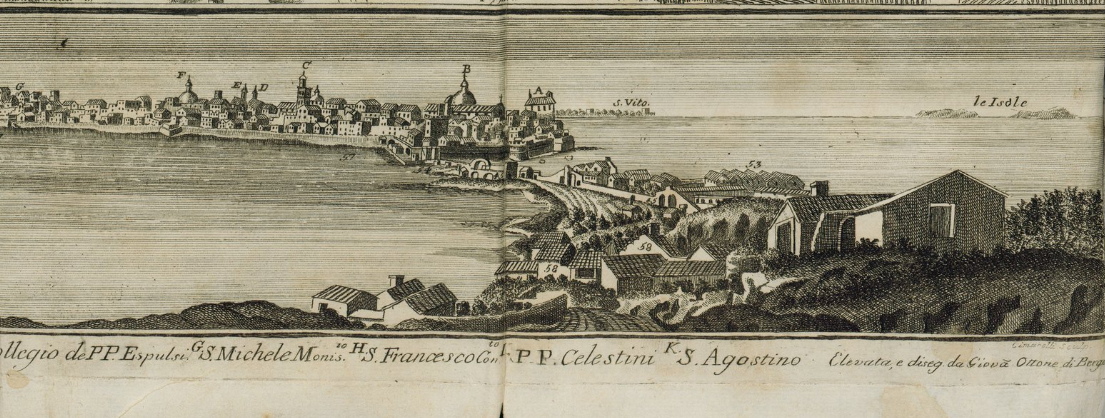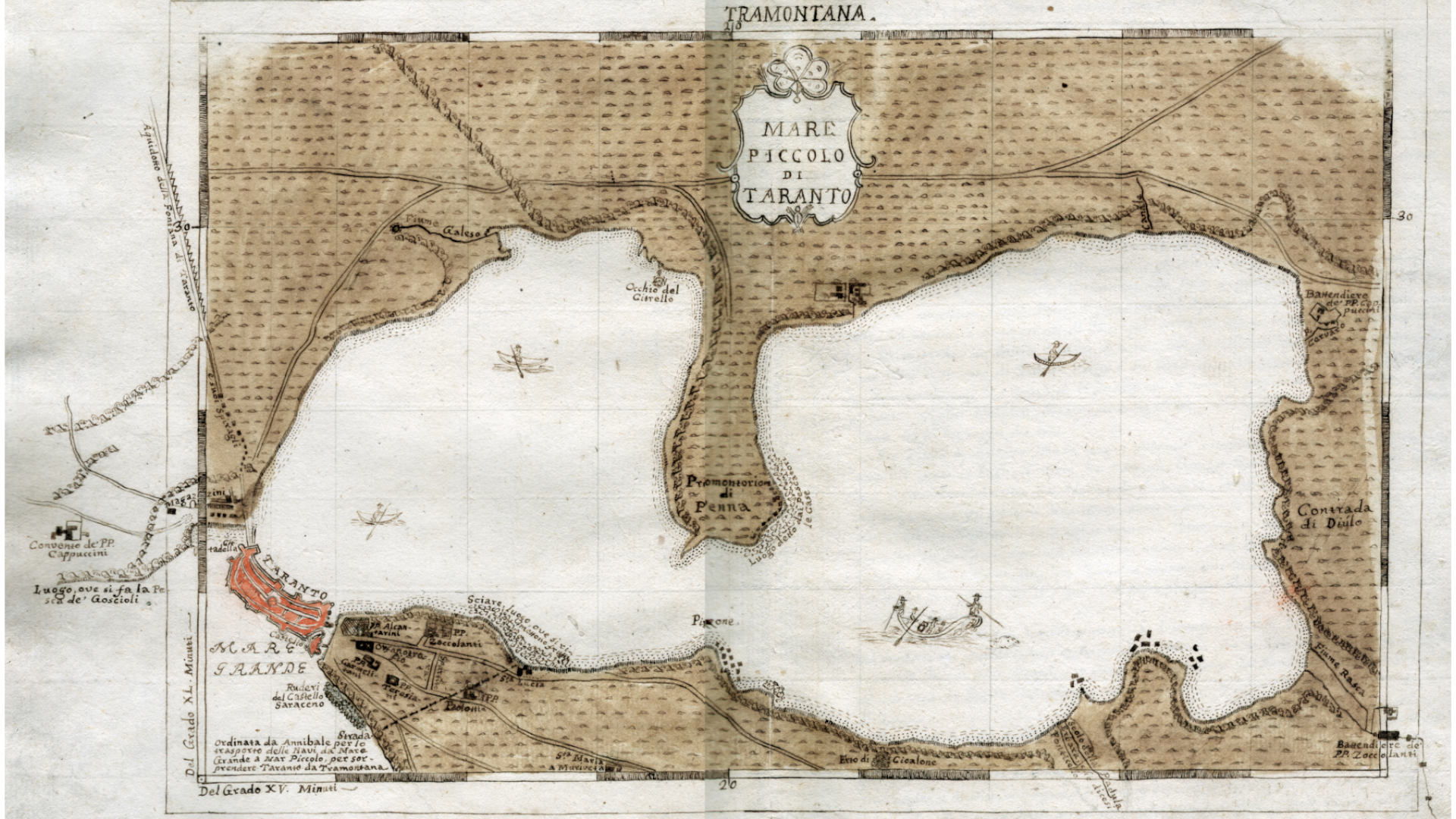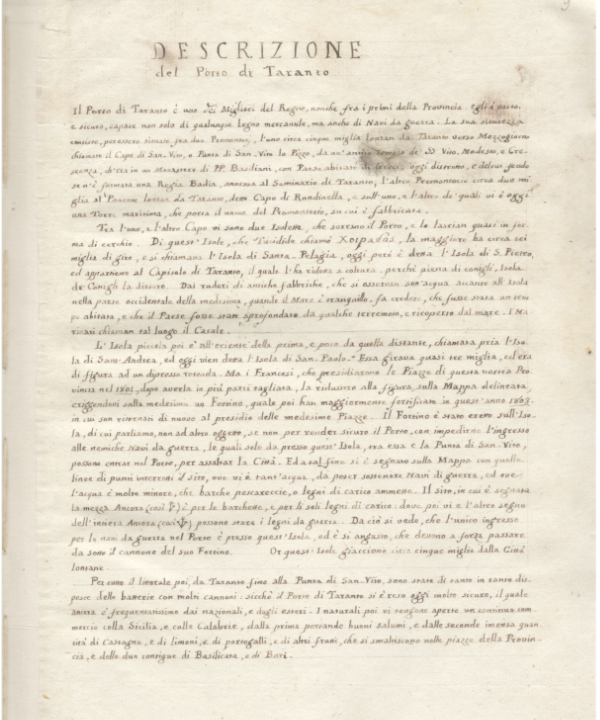IL PERIODO MODERNO ENG
THE MODERN PERIOD
FROM THE AUSTRIANS TO THE BOURBONS, A REVIVAL OF THE COMMERCIAL PORT
A 1717 chronicle by the Taranto priest Cataldo Antonio Cassinelli records that the port was frequented not only by Venetian ships, but also by ships coming ‘from distant lands of England, Holland, Spain and Portugal‘, which ‘sail there daily, loading up with wheat, grain, wine, wool, oil, cheese and shellfish, or bringing new merchandise to sell’.
There are, among the products exported to the ‘Kingdom of Naples, and other more distant countries; the oysters by the end and black Tarentine mussels are without number; so that there was one who in this regard compared them to the stars of Heaven’.
THE FIRST BOURBON PERIOD, IN THE MIDDLE OF THE EIGHTEENTH CENTURY
Oil remained one of the most traded products from the Apulian ports. Taranto continued to satisfy the demand from England and a new trade route to France was established. In addition to oil, other traditional products from Apulia, such as wheat and wool, were sent by ship.
In 1755, work began on reopening the canal ditch, which tended to silt up, isolating the Mar Piccolo and its farms from the open sea.
At the end of the eighteenth century we know that products from Lucania and Calabria (dried figs) were also arriving by haulage boats in the short natural bend to the north-west, which was relatively sheltered but lacked quays and harbour facilities.
FRENCH TARANTO
The Napoleonic period confirmed more decisively the Mediterranean role of the port of Taranto, a role that would become more specific with the opening of the Suez Canal in 1869. New traffic, new balances and new disputes affected the port in this period while, with the unification of the Kingdom of Italy, firstly the naval and coastal defence necessities were identified, then the expansionist, colonial and political ones, directed towards the Mediterranean, the Balkans and Africa.
THE VISION OF THE NAPOLEONIC STATE
Napoleon asked General Soult and Admiral Villeneuve to study the port of Taranto and stipulate the works necessary to give it maximum efficiency and security. The works, carried out in a very short time, concerned the wide harbour, which was fortified at its entry points; the island of S. Paolo on which batteries were installed and the fortification of Capo di S. Vito. On the island of S. Nicolicchio, which overlooked the Rondinella pass and the anchorage of the merchant port, another battery with several cannons was placed.
And thus, with the decree of 3 September 1813, the port of Taranto was declared a military port and therefore under the authority of the Ministry of War and the Navy.
THE CONTINENTAL BLOCKADE
The French occupation of Apulia was not tolerated by the English government. In response, Napoleon set up the so-called ‘continental blockade’ to prevent England from trading with the ‘continent’ (Western and Central Europe), but this embargo had repercussions on the fragile economy of Salento, which at that time was based mainly on the sale of oil and wine abroad, above all to the Low Countries and England.
THE WIND OF MODERNITY
On the whole, Taranto benefited from the French reorganisation, as can be seen from the increase in population: in 1814, the city had more than 14,000 inhabitants. With the 'feudal eversion' law of 1806, noble and ecclesiastical privileges were abolished.
Along with other ancient impositions, in 1806 the rights over the Taranto fishing boats were abolished, so the number of fishermen and sailors increased (748 out of the 1,202 in the Territory of Otranto). By then, the black mussels produced in Taranto were traded throughout the province and even outside, in neighbouring regions, with a gross income of 40,000 ducats, to which was added the income from fishing for other seafood and fish of all kinds.
The salting of fish, although a long-standing tradition, was underdeveloped at this time.
FROM THE UNIFICATION OF ITALY TO INITIAL INDUSTRIALIZATION
The merchant port, once so flourishing and a hive of activity, had fallen into a real crisis during the last period of Bourbon rule. It was only with the unification of the Kingdom of Italy that it was thought to enlarge it and make it suitable for receiving even the large steamers, ships powered by steam that were starting to ply the Mediterranean and oceanic routes.
The decision to install a naval base there led to the need to also construct the Military Arsenal. It was really this large shipyard that altered the appearance of the city and the port, which saw its traffic increase considerably, especially during the First World War.




